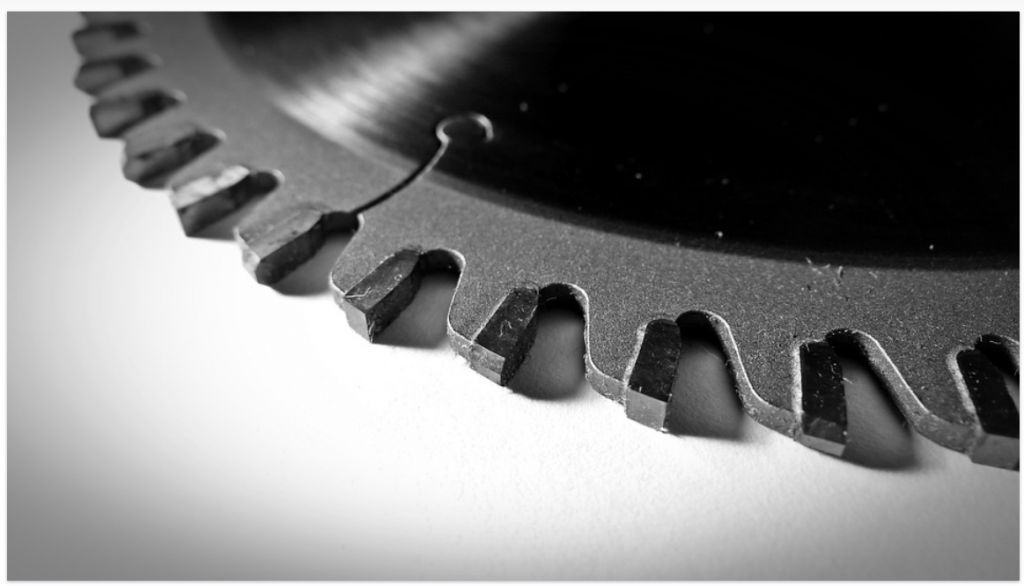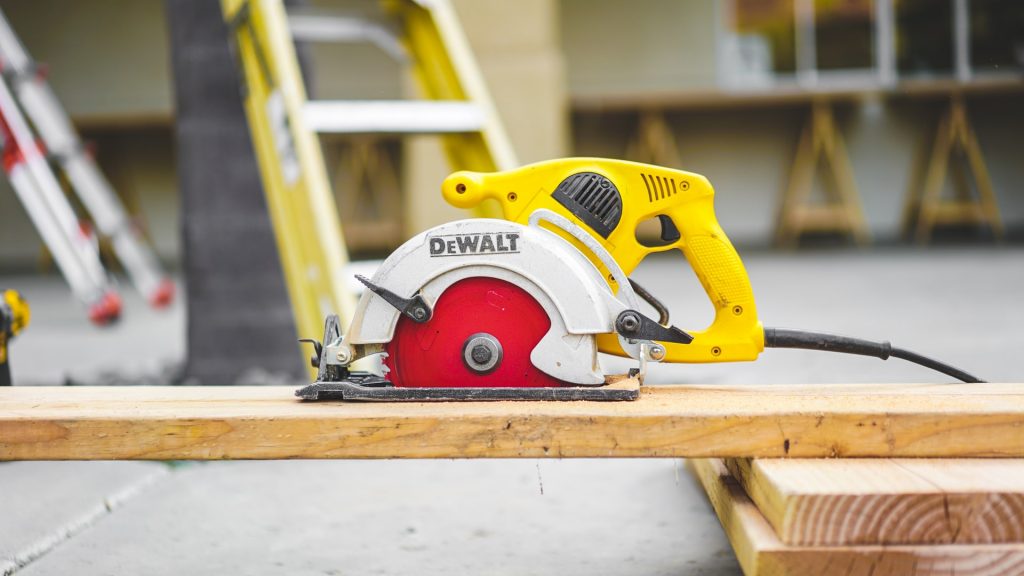Miter saws aren’t the only tool you can use to cut baseboard corners. There’s a variety of manual and power tools that can make your task easy and efficient at the same time.
In today’s post, we will discuss the multiple methods that you can use to cut baseboards without a miter saw. Moreover, we’ll also explore the tools you need to make precise cuts.
Quick Summary
Here are some things we will cover by end of this article:
- Guide to cut baseboards without a miter saw
- Important tips
- Frequently asked questions
Let’s take a look into it.
Guide To Cut Baseboards Without a Miter Saw
Baseboards are usually used to cover corners on the wall and the floor. You can cut baseboard pieces to make coped joints that can enhance the overall look of your entire house.
The most used tool for this task is a miter saw due to the utility it provides. However, you can use other saw tools as well to make the same cuts.
Even though it requires some skill in the craft and a certain level of finesse but you can achieve the same precision with enough practice.
Here’s a list of tools you can use instead of a miter saw:
- Circular Saw
- Hand Saw
- Jigsaw
You can use any of the aforementioned tools to cut baseboard corners without a miter saw. It is important to note that if you use a manual tool, the time to get the task done will increase by a considerable amount.
Now, let’s see how you can cut baseboard corners without a miter saw using the aforementioned tools.
How to Cut Baseboard with a Circular Saw?
A circular saw is the most used hardware tool to cut baseboards corners without a miter saw. You can use it to cut a piece of trim for crown molding or a scarf joint.
Moreover, it enables you to make bevel cuts for a corner block just like a miter saw. You can save a lot of time to cut the baseboard with the help of a circular saw.
Here are the steps:
1. Mark the Baseboard Pieces
The first is to mark the cutting point on your baseboard piece. Since baseboards are usually used to cover up a corner point, you only have to mark one edge of the piece.
You can use a pencil or a marker for this purpose. However, we recommend using a pencil because it is easy to remove from the joints.
2. Set the Bevel Angle
For the next step, you need to make adjustments to the blade of the saw. Check the bevel knob and tilt it at a 45-degree angle.
In order to cover one corner, you need to cut trim two different pieces of baseboard at a 45-degree angle.
Is it necessary to cut the baseboard at a 45-degree angle?
You can not cover a corner wall molding without a 45-degree angle. Because when joined, these pieces will make a complete 90-degree angle joint.
This will provide a seamless wood joint and make your cut look highly professional.
3. Cut the Baseboard Pieces
Once you mark the pieces, use the circular saw to cut straight along the cutting line. Simply guide the shoe through the piece without any forward or backward motion.
After that, attach the pieces along the cut joints and observe if the molding fits perfectly. Otherwise, simply use sandpaper to remove any uneven spots.
Note: Do not attach the pieces to the wall without proper inspection. This will waste a lot of your time and other resources if there is even a slight uneven spot.
4. Install your Baseboard Pieces
After you are satisfied with the quality of the cut, clean the pieces and remove the pencil line from each edge.
For installation, you can either screw holes in the pieces or apply adhesive. It depends on your personal preference.
How to Cut Baseboard with a Hand Saw?
When it comes to hand saw, it gets a little bit tricky to make straight and angled cuts. In order to make an angled cut using a hand saw, you can choose from two methods.
One is by marking the joints on your own with the help of an angle tool. Besides that, you can use a miter box to make an identical miter cut.
Here are the steps:
- Place your baseboard piece flat against the wall and mark a straight line.
- Now place the angle tool at the waste side and mark a 45-degree point. Connect this point with the base of the straight line.
- Use your hand saw to cut along the edge of the baseboard block.
- Repeat the process for the second baseboard block and you’ll have a clean corner cut.
Steps for Miter Box:
- Purchase a miter box from any hardware store and place your baseboard piece inside.
- Use a tape measure to mark the edge of your piece of trim.
- Align your handsaw with the 45-degree angle and slowly cut it.
- Repeat the same process for the other piece and install them on your wall.
How to Cut Baseboard Corners with a Jigsaw?
In order to cut baseboards corners without a miter saw, a jigsaw is your third option. Compared to a hand saw, using a jigsaw will speed up the entire process.
Moreover, using a jigsaw also enables you to cut trim scarf joints. It can either be used for wood, crown molding, or even a block of plastic.
Here’s how you can do it:
- Measure your wood plank/molding piece with a tape measure.
- Draw a clear pencil line on one edge.
- Slowly cut the wood piece with the help of your jigsaw.
Note: The key to make a clean coped cut, you should always keep the saw steady and move it slowly. If you make haste, the blade can easily deviate.
- After the cut, trim the edges to even the surface for the coped joint.
- Make sure the blade of your jigsaw is clean.
- Repeat the process for other pieces as well.
For a scarf joint:
In order to make a scarf joint, you have to add a couple of steps in the aforementioned process.
- Take one of your wood pieces and draw a clear joint on both sides.
Note: The best way to make this joint is to cut both pieces at 25 degrees on opposite sides.
- Make sure that the outlines are aligned and have the exact same dimensions.
- Use your jigsaw and cut the piece carefully.
- Repeat the same process with the other wood piece.
Important Things to Keep in Mind

It is quite easy to mess things up if you are not using a power tool. However, we have prepared a list of things you need to look out for.
Here they are:
Working Space
Spacious and clean working space can go a long way especially if you wish to work on a hardware project.
Make sure that your working table is clean and has enough room for wooden planks. Moreover, you need to check if the table is stable.
Why does the stability of my table matter?
In some situations, even a slight nudge can ruin the precision. So, before you start your project, make sure that the table is firm.
Trimming
Uneven edges are quite common when it comes to manual tools. We recommend that you leave a millimeter of space on each cut.
This way, you can trim the edge to make it smooth. Moreover, it will also reduce the risk of an overcut. When you cut baseboard corners without a miter saw, undercut and overcut are quite common.
Why is there room for error?
Using a miter saw allows you to cut along a line with power. However, a human hand can’t match that power so the cut has a small margin of error, especially around a corner.
Sharp Blade
Always use a sharpened blade with an appropriate speed. If you cut too fast, the cut might have some splinters. If you cut too slow, you might not be able to cut at all.
Take your blade and test the speed on a spare piece first. This way, you’ll get a good idea of which sort of hand movement is required.
Find more resource guides for your favorite tools HERE.
Frequently Asked Questions (FAQs)
Can I use a coping saw to cut baseboards?
You can use a coping saw to cut baseboards but keep in mind to make clean cuts. Coping saw is generally used for small cuts. If you wish to cut large pieces, it is better to use a hand saw.
What should I use to mark the baseboards?
A pencil is the best way to mark baseboards. This is because baseboards are generally white and pencil markings easily stand out. Moreover, they are easy to remove as well.
Should I use glue or nails to fix a joint?
Nails are preferred by many experts as they provide better grip and stability. However, they are quite tricky to install. We suggest you use baseboard glue to make your corner joints.
Wrapping Things Up…
With this, we come to the finish line of our guide on how to cut baseboards without a miter saw. We hope this information proves to be beneficial for you.
Baseboards are soft and can be cut with the help of manual tools. All you need to do is mark the boards and cut along the lines. After that, you can simply join different pieces to form your desired joint.
Do let us know which you use to make corner joints.
For more information, CLICK HERE.

